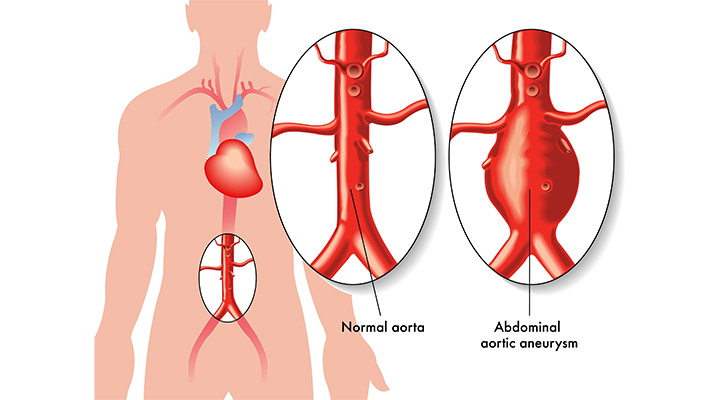Aortic Aneurysm is a serious health condition that occurs when the aorta, the largest artery coming out of the heart, abnormally enlarges. Although it often progresses silently, it can lead to life-threatening complications. In this article, you will find comprehensive information about aortic aneurysms—from their definition and types to prevalence, risk factors, and diagnostic methods.

What Is an Aortic Aneurysm?
The term “aneurysm” refers to the abnormal bulging of a blood vessel due to the weakening of its wall. An aortic aneurysm is this bulging that occurs in the aorta—the body’s largest artery that carries oxygen-rich blood from the heart to the rest of the body. When the enlargement reaches a certain diameter, it can lead to severe complications such as rupture of the vessel wall.
Types of Aortic Aneurysms
Aortic aneurysms are classified according to the region where the enlargement occurs:
- Ascending Aortic Aneurysm: Occurs in the initial segment of the aorta coming out of the heart. It is often associated with congenital heart valve disorders or connective tissue diseases.
- Aortic Arch Aneurysm: Occurs where the aorta branches off to supply blood to the brain.
- Thoracic Aortic Aneurysm: Develops in the portion of the aorta located in the chest cavity.
- Abdominal Aortic Aneurysm: Occurs in the abdominal segment of the aorta and is the most common type.
What Is the Difference from Dissection?
Another condition that should not be confused with an aneurysm is an aortic dissection. Dissection occurs when there is a tear in the inner layer of the aortic wall, allowing blood to flow between the layers and form a false channel. Aneurysm and dissection may sometimes occur together. In both cases, the greatest danger is the rupture of the vessel wall.
Prevalence
Aortic aneurysms often progress silently and do not show symptoms for a long time. Therefore, they are frequently discovered incidentally during diagnostic procedures for unrelated conditions. Among individuals over the age of 50, the prevalence is 25 per 100,000 people. Considering Turkey’s demographics, an estimated 3,000–4,000 new cases of aortic aneurysm are diagnosed each year.
Unfortunately, there is no dedicated screening program for this condition in Turkey. As a result, early diagnosis rates remain low.
Who Is at Risk?
The primary risk factors that increase the likelihood of developing an aortic aneurysm include:
- Family history of aortic aneurysm
- History of brain aneurysm
- Individuals over the age of 70
- High blood pressure
- Prolonged smoking history
- Congenital bicuspid aortic valve
Can It Occur in Young People?
Although aortic aneurysms are generally seen in older adults, they can also appear at younger ages in certain cases:
- Connective tissue disorders such as Marfan Syndrome, Loeys-Dietz Syndrome, and Ehlers-Danlos Syndrome
- Congenital valve abnormalities like bicuspid aortic valve
- Family members with a history of aortic rupture at a young age
- Genetic predisposition and connective tissue weakness
For this reason, it is recommended that young individuals with these risk factors undergo regular cardiology check-ups.
How Is an Aortic Aneurysm Diagnosed?
Aortic aneurysms often show no symptoms. However, depending on their size and location, they may cause the following signs:
- Large aneurysms in the chest may press on the vocal cords, causing hoarseness
- They may compress the esophagus, leading to difficulty swallowing
- In thin individuals, abdominal aneurysms may be noticed as a palpable pulse in the abdomen
Diagnosing an aneurysm is actually quite straightforward. The first step is clinical suspicion. If suspected, imaging techniques are used to confirm the diagnosis. The most commonly used diagnostic methods include:
- Echocardiography (for evaluating the heart)
- Ultrasonography (for the abdominal area)
- CT Angiography or MR Angiography (for assessing the thoracic and abdominal aorta)
